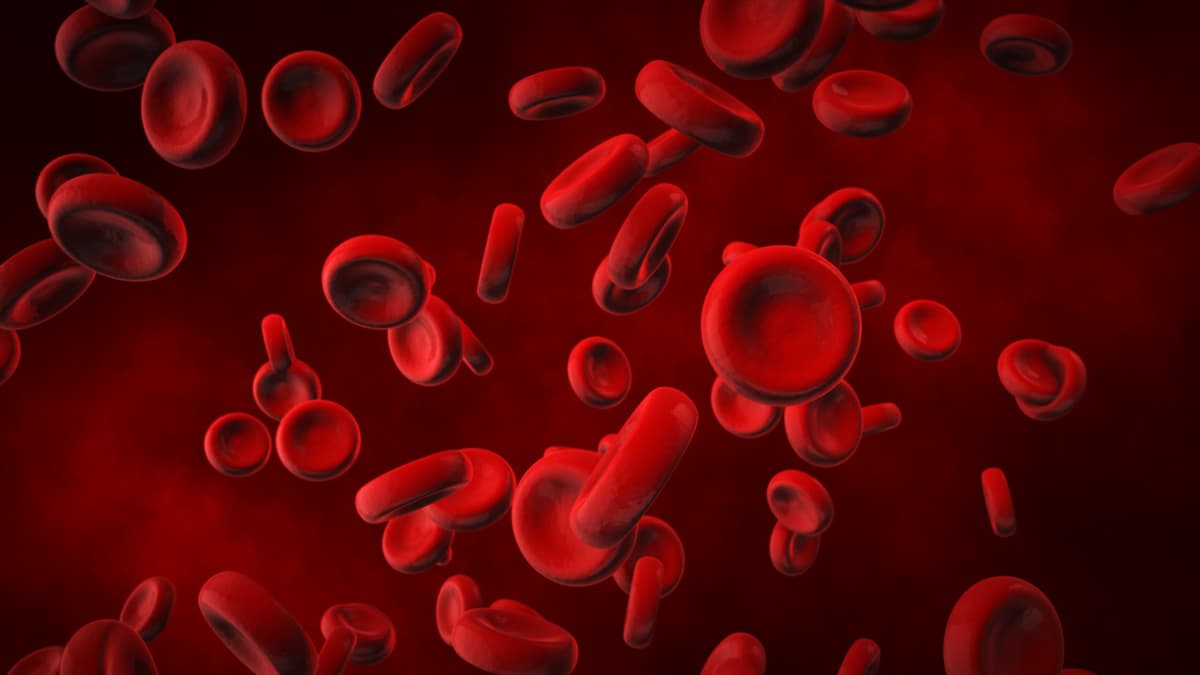Imetelstat Yields Enduring RBC-TI in Lower-Risk Relapsed/Refractory MDS
Treatment with imetelstat produces robust activity in patients with relapsed/refractory myelodysplastic syndrome regardless of ring sideroblasts in the phase 3 IMerge trial.
Taken together, IMerge phase 3 [NCT02598661] results validate the observations from the phase 2 part and show that imetelstat provides clinically significant benefit to a heavily transfusion-dependent LR-MDS population," according to the study authors.

Administering imetelstat to patients with lower-risk myelodysplastic syndrome (LR-MDS) who are relapsed or refractory to erythropoiesis-stimulating agents (ESAs) resulted in sustained transfusion independence and disease-modifying activity, according to findings from the phase 3 IMerge trial (NCT02598661).
Overall, 40.0% (95% CI, 30.9%-49.3%) of patients who were treated with imetelstat and 15.0% (95% CI, 7.1%-26.6%) of those who received placebo achieved red blood cell transfusion independence (RBC-TI) for at least 8 weeks (P = .0008). Among patients with ring sideroblasts, RBC-TI for at least 8 weeks was observed in 45% and 19% of patients in each respective treatment group. Additionally, RBC-TI for 8 or more weeks was reported in 32% and 9% of each respective group among patients without ring sideroblasts.
Investigators noted that 28.0% (95% CI, 20.1%-37.0%) of patients in the imetelstat group achieved RBC-TI for at least 24 weeks compared with 3.0% (95% CI, 0.4%-11.5%) of those who received placebo (P = .0001). The corresponding rates in each respective treatment group were 33% vs 5% among those with ring sideroblasts as well as 20% vs 0% among patients without ring sideroblasts.
The median duration of RBC-TI was 51.6 weeks (95% CI, 26.9-83.9) in those who received imetelstat compared with 13.3 weeks (95% CI, 8.0-24.9) in those who were treated with placebo (HR, 0.23; 95% CI, 0.09-0.57). Among those who achieved RBC-TI for 8 weeks, the median blood hemoglobin level increase from baseline was 3.55 g/dL (range, –0.07 to 13.76) in the experimental group and 0.80 g/dL (range, –0.16 to 1.67) in the control group. Additionally, 34.0% (95% CI, 25.4%-43.2%) and 10.0% (95% CI, 3.8-20.5) of patients in each respective group had a hemoglobin increase of at least 1.5 g/dL for 8 or more weeks. Investigators reported hematological improvement-erythroid (HI-E) in 42% and 13% of patients in each respective group based on International Working Group (IWG) 2018 criteria.
“Importantly, robust activity irrespective of ring sideroblasts, and especially in patients with high transfusion burdens, distinguishes imetelstat from currently available therapies,” the study authors wrote. “Taken together, IMerge phase 3 results validate the observations from the phase 2 part and show that imetelstat provides clinically significant benefit to a heavily transfusion-dependent LR-MDS population.”
In the double-blind phase 3 IMerge trial, patients were randomly assigned 2:1 to receive imetelstat at 7.5 mg/kg (n = 118) or matched placebo (n = 60) intravenously every 4 weeks until disease progression, unacceptable toxicity, or withdrawal. Investigators stratified patients based on previous RBC transfusion and International Prognostic Scoring System (IPSS) risk group.
The trial’s primary end point was RBC-TI for 8 or more weeks. Secondary end points included 24-week RBC-TI, duration of RBC-TI, HI-E based on IWG 2006 and 2018 criteria, time to RBC-TI, and safety. Patients 18 years and older with MDS, and low or intermediate-1 risk disease based on IPSS guidelines, RBC transfusion dependence requiring at least 4 units over an 8-week period, and relapsed/refractory disease or ineligibility to receive ESAs were able to enroll on the trial.
The median age was 72 years (IQR, 66-77) across the entire patient population. Among those who received imetelstat and placebo, respectively, most were male (60% vs 67%), White (81% vs 80%), non-Hispanic (85% vs 80%), had ring sideroblasts (62% vs 62%), IPSS low-risk disease (68% vs 65%), and revised IPSS low-risk disease (74% vs 77%). In each respective group, the median time since MDS diagnosis was 3.5 years (IQR, 1.9-6.3) and 2.8 years (IQR, 1.3-5.4).
Among those with ring sideroblasts of 15% or more and a minimum of 1 assessment after baseline, 41% in the imetelstat group and 10% in the placebo group had a bone-marrow ring sideroblast reduction of at least 50% compared with baseline. Additionally, a reduction in telomerase activity of 50% or higher from baseline was observed in 60% and 38% of each respective group.
A meaningful improvement in fatigue was reported among 50% of patients in the imetelstat group compared with 40% of those who received placebo based on the FACIT-Fatigue scale. The median time to first meaningful sustained improvement in fatigue was 28.0 weeks (95% CI, 16.6-64.1) with the experimental agent and 65.0 weeks (95% CI, 24.0-not estimable) with placebo.
Grade 3/4 treatment-emergent adverse effects (TEAEs) affected 91% of those who received imetelstat compared with 47% of patients who were treated with placebo. The most common high-grade toxicities in each respective group included neutropenia (68% vs 3%), thrombocytopenia (62% vs 8%), anemia (19% vs 7%), and leukopenia (8% vs 0%). Additionally, serious TEAEs occurred in 32% and 22% of patients, respectively.
Overall, 16% of patients who received imetelstat died compared with 13% of those in the placebo group. One patient in the experimental group died due to neutropenic sepsis after approximately 2 years of treatment, and another patient in the placebo group died following aortic stenosis. Investigators noted that both deaths did not appear to be related to study treatment.
Reference
Platzbecker U, Santini V, Fenaux P, et al. Imetelstat in patients with lower-risk myelodysplastic syndromes who have relapsed or are refractory to erythropoiesis-stimulating agents (IMerge): a multinational, randomised, double-blind, placebo- controlled, phase 3 trial. Lancet. Published online December 1, 2023. doi:10.1016/S0140-6736(23)01724-5
Pelabresib/Ruxolitinib Improves SVR35/TSS Outcomes in Myelofibrosis
December 12th 2023The combination of pelabresib plus ruxolitinib shows improvement in hemoglobin response in the MANIFEST-2 trial, supporting a potential shift in the future treatment of patients with JAK inhibitor–naive myelofibrosis.